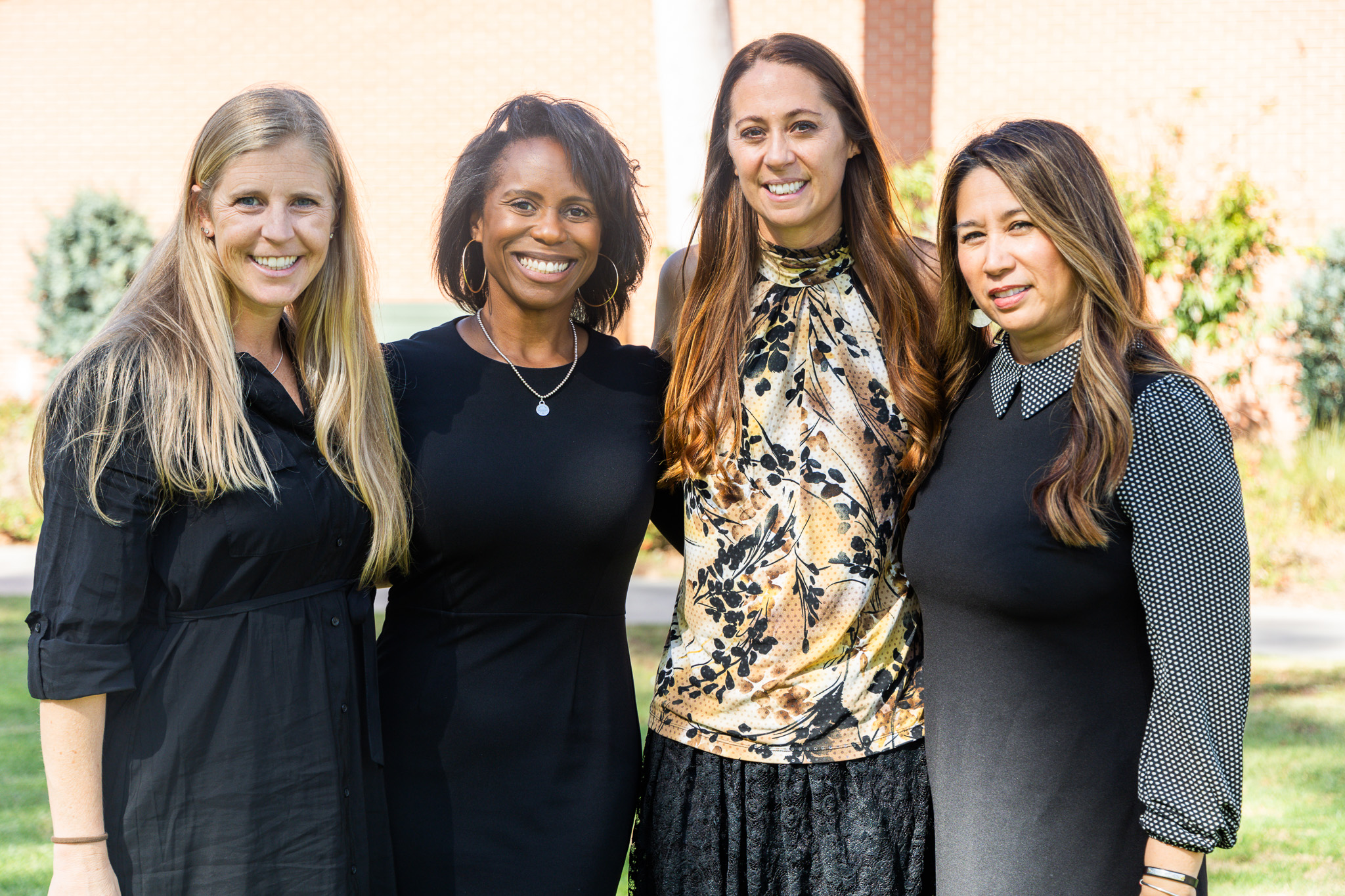Kinesiology and Speech-Language Departments Team up for Project CARE
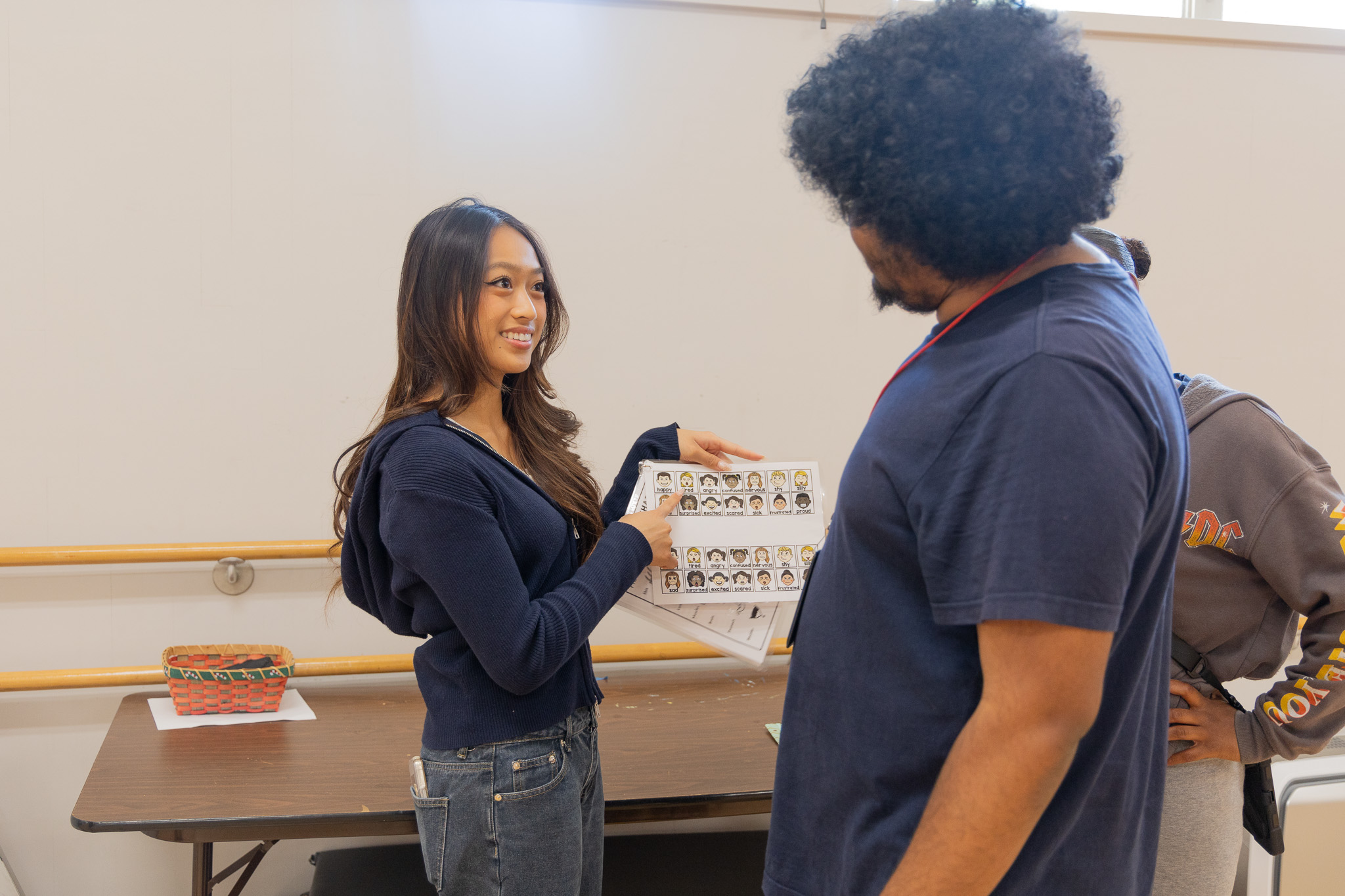
Communication is key, especially when there are so many different activities going on during the Adult Community Transition (ACT) program for students with disabilities.
Every Wednesday morning during the semester, CSULB hosts over 60 young adults with disabilities, ages 18-22, from the community and through Long Beach Unified School District (LBUSD). They gather in the Kinesiology building’s west gym -- eager to start a busy, fun-filled morning of activities.
In one corner, CSULB Speech-Language Pathology (SLP) student Kennedy Bruce, helps her pupil navigate the weight room in the LifeFit Center.
“I participated in this program last year, and I was excited to do it again this semester,” Bruce says. “It’s really great to have hands-on training and it definitely gets you into the field nicely.”
Bruce, who is interested in providing speech therapy for neurodivergent populations upon graduating, notes that learning from Adapted Physical Education (APE) Kinesiology students has been a unique and beneficial experience for her own practice to take into the field.

Thanks to a federal grant providing a new generation of adapted physical education and speech-language pathology professionals, interdisciplinary programs like ACT will continue to thrive.
“In California, a large portion of SLP and APE professionals are hired on an emergency waver each year,” said Dr. Melissa Bittner, Associate Professor in the Department of Kinesiology and Co-Director of the Adapted Physical Education program at CSULB. “There is a high need of both SLP and APE professionals in the field, not only in California, but the nation.”
The $1.25 million grant given out from the U.S. Department of Education – Office of Special Education Programs (OSEP) is being delivered to the new initiative at CSULB termed Project CARE (Collaboration and Responsive Research in Education). Project CARE will train pre-professional graduate students at CSULB in adapted physical education and speech language pathology, including those from underrepresented groups. This training grant will provide full tuition, technology support, research opportunities, mentorship, interdisciplinary coursework, and conference travel for 32 students over the next 5 years.
“I think that’s one of the main items outside of going to class that really hits home for our students – being in these professional environments, such as an industry conference, and being able to collaborate with students outside their own discipline,” said Dr. Belinda Daughrity, CSULB Associate Professor in the Department of Speech-Language Pathology. Dr. Daughrity is one of the proposal writers on the grant with Drs. Melissa Bittner, Amanda Young (Associate Professor in the Department of Kinesiology, APE Co-Director) and Alaine Ocampo (Department of Speech-Language Pathology professor and Interim Associate Dean for the College of Health and Human Services).
“It is fitting because it was an interdisciplinary effort between our two departments – Adapted Physical Education and Speech Language Pathology – in writing this grant proposal, and our APE and SLP students have been working together in the service-learning programs that we provide on campus, for numerous years now,” said Dr. Amanda Young. “We are planning to fund at least 32 scholars over 5 years split between SLP and APE students.
“Far too often our disciplines can be siloed – it really should be connected, and I think that is the future,” Dr. Bittner adds. “We need more of this collaboration keeping the ‘whole child, whole student’ in mind.”
Matthew Schabert, a teacher in the Long Beach Unified School District for the ACT program agrees. “In our realm of adapted physical education, communication is key to help address the wide range of disabilities within our program. [The ACT program] has been going on for over 30 years on the campus of Cal State Long Beach. We used to bring just a small group of 8-10 students to campus -- now if you look around, we have more than 60 students here in multiple spaces. It’s a real testament to how this program has grown at CSULB, and it has been tremendously helpful having the [CSULB] speech-language students here with the kinesiology students, where they can troubleshoot together, learn about different disabilities and different modes of communications. I think it’s just awesome.”
Sid Butler, a CSULB Kinesiology student studying in the Adapted Physical Education program, says the collaboration with the Department of Speech-Language Pathology has been a win-win all around.
“I think it’s a great way for APE [student] teachers and SLP students and teachers to collaborate and understand how to work with students who have different disabilities, to make sure everyone is being included in the activities here.”
For several years now, APE and SLP students have been working together to put on the various service learning and community programs taking place on campus for young adults and children with disabilities. In addition to the Adult Community Transition program, which occurs in the 10 weeks during the regular semester, CSULB also hosts Camp Nugget during the summer. Camp Nugget just celebrated its 55th year of providing a summer camp for children with disabilities. Other programs include the After School Adapted Physical-Activity Program (ASAPP) and the newly forming Camp Abilities for those students with specific visual impairments.
“Our SLP students, who have participated in these programs over the years with the Adapted Physical Education students, have always come back to our department with such great feedback,” Dr. Belinda Daughrity says. “They just love how active these programs are, and they love that the kids are interested and engaged. Oftentimes it gives our SLPs a different perspective about [traditional] therapy [methods] – it doesn’t have to be seated at the table for the full hour all the time – it can be more active. Those students who have those experiences outside the classroom I think do really well – they are able to connect more of what they are learning, to what they are actually going to practice in the field, and I think that is very critical.”
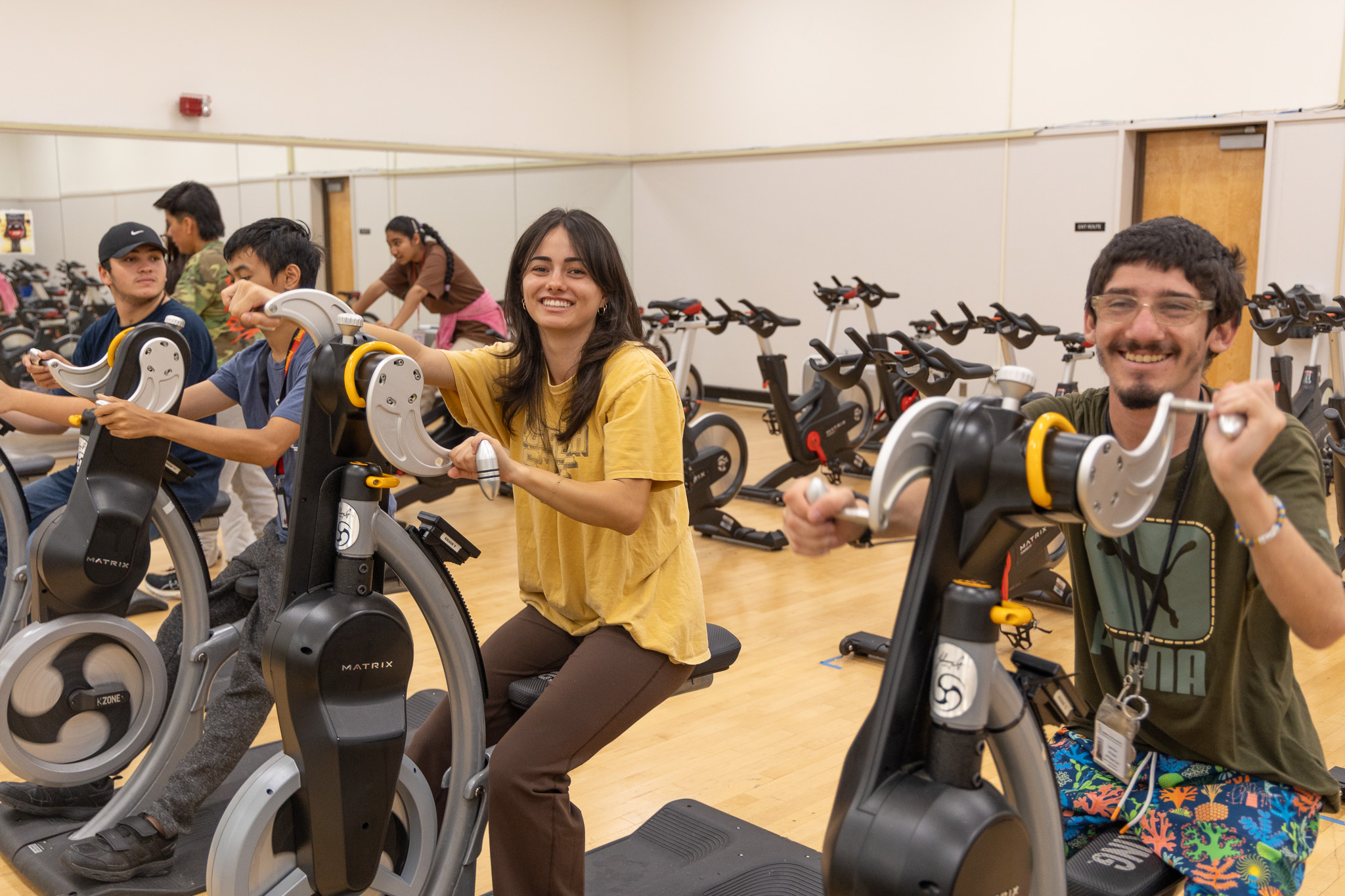
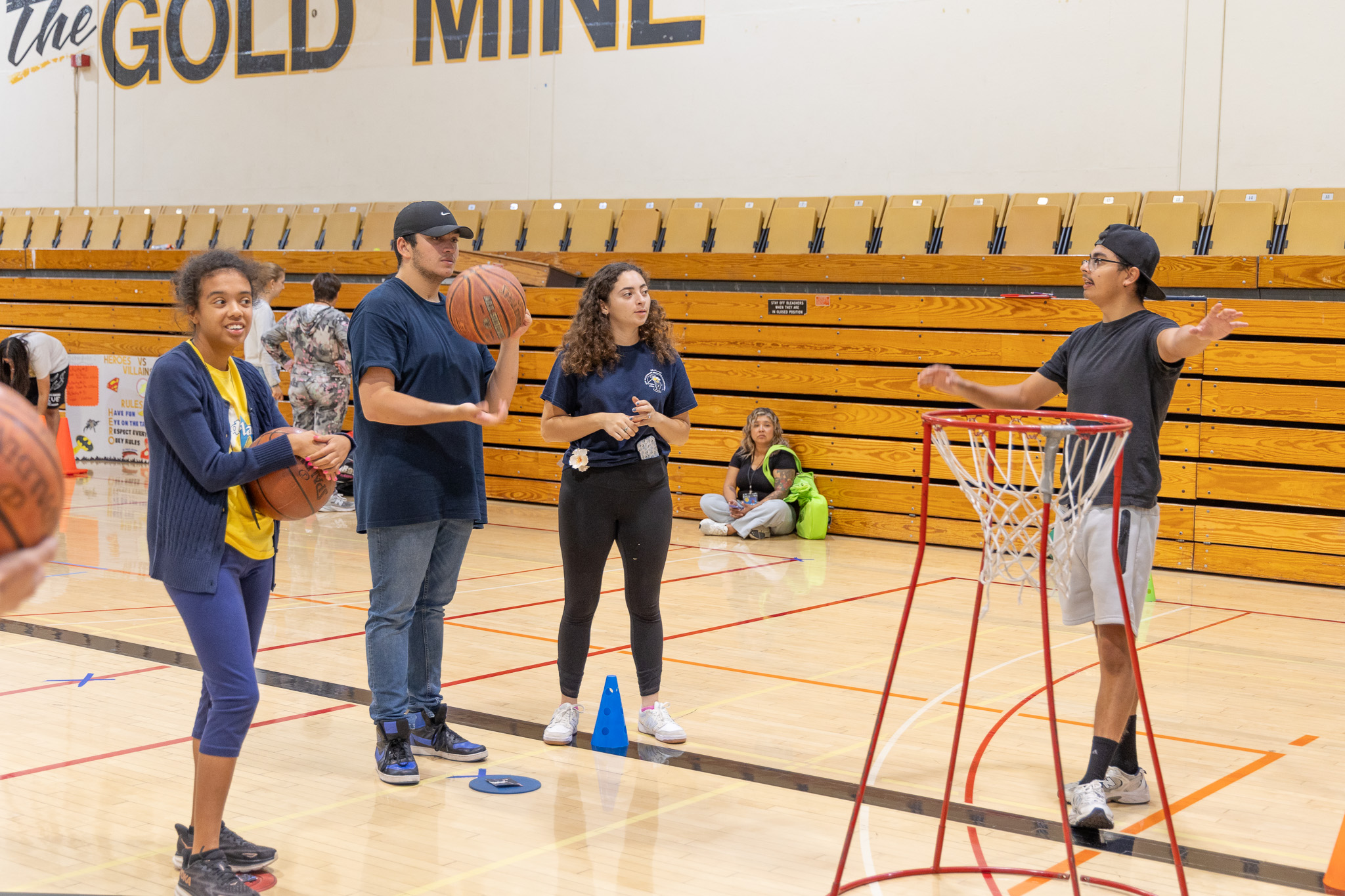
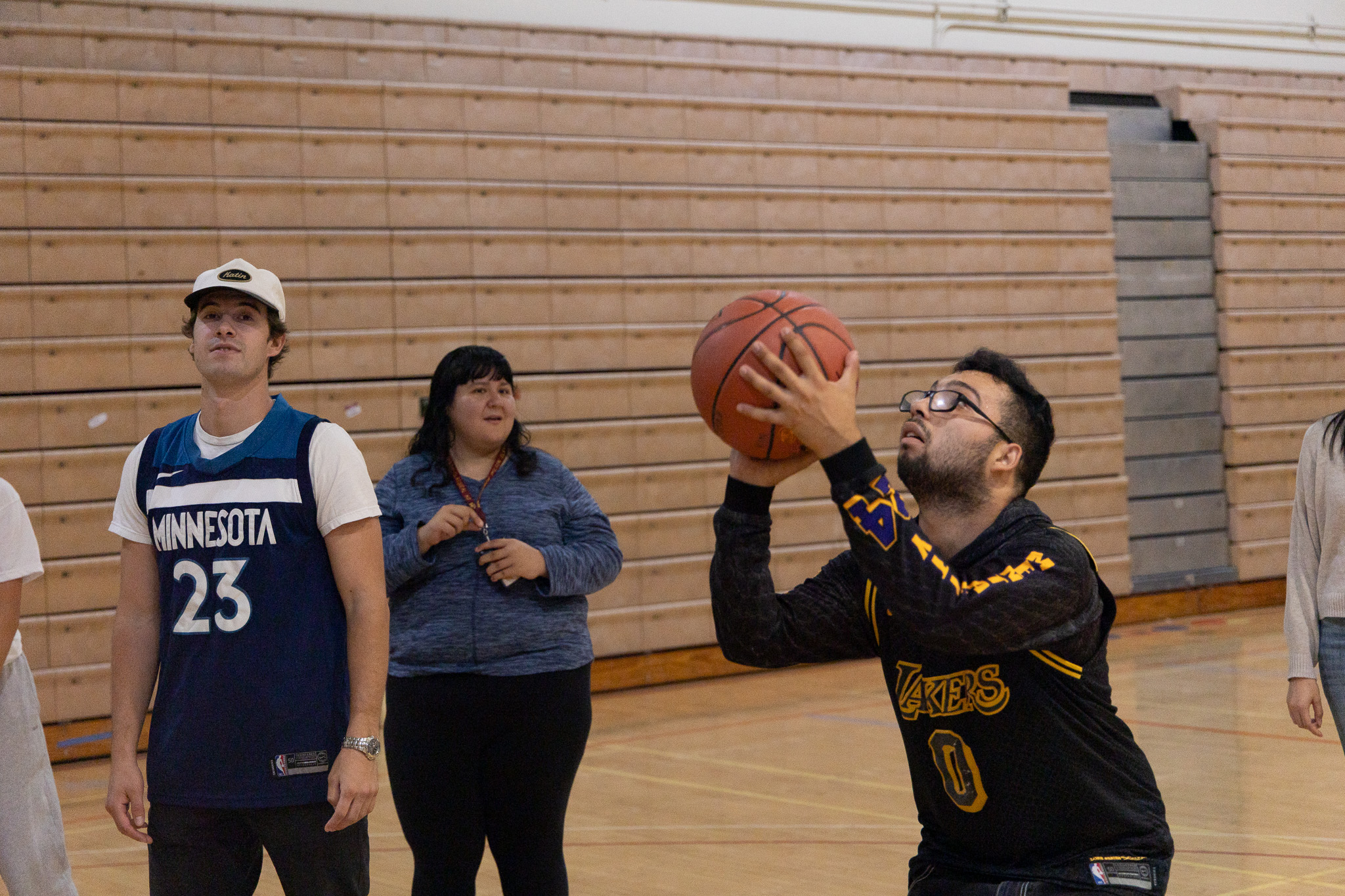
Melissa Cutter, the Speech-Language Pathologist for the LBUSD ACT program, who comes to supervise the transition practicum participants with disabilities, also comes to provide helpful tips and advice for current students studying in the Department of Speech-Language Pathology. Having herself received a master’s degree in speech-language pathology in 2020 and now working as a professional in the field, she gives CSULB SLP students a peak down the road of where they might like to see themselves someday, working in the field.
“At the beginning of every practicum [for ACT], I meet with the students in a separate classroom and we discuss strategies, hot topics in the field, and open it up to any questions they might have about working in schools, working in clinics, working in hospitals. I enjoy learning with, and from, the [speech-language] students as well -- in how we can make this a better experience for our [transition practicum] students [with disabilities].”
It's a continual process of learning for current APE and SLP students, and for their pupils. That road just got a little easier, thanks to the Project CARE grant. Even for the proposal writers themselves, who submitted five times to receive funds and who were ultimately rewarded this academic year, have come to share that same notion of teamwork and resilience.
“Just how we expect our students to collaborate in and out of the classroom, we, ourselves had to collaborate in order to make this happen,” said Dr. Bittner, speaking of her team with Drs. Young, Ocampo and Daughrity. “We are so excited to launch our first cohort of scholars under this grant in the spring!”
